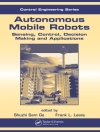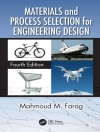The development of smart materials for environmental applications is a highly innovative and promising new approach to meet the increasing demands from society on water resources and pollution remediation. Smart materials with surfaces that can reversibly respond to stimuli from internal and external environments by changing their properties show great promise as solutions for global environmental issues. Many of these functional materials are inspired by biological systems, that use sophisticated material interfaces to display high levels of adaptability to their environment. Leading researchers present the latest information on the current and potential applications of omniphobic slippery coatings, responsive particle stabilized emulsions and self-healing surfaces among other functional materials. The book contains a section dedicated to water treatment and harvesting, describing and explaining strategies such as use of copolymer membranes and surfaces with patterned wettability. It provides a valuable source of information for environmental, materials, polymer and nano-scientists interested in environmental applications of functional material surfaces.
Innehållsförteckning
Introduction;
Smart Materials as Forward Osmosis Draw Solutes;
Superwetting Nanomaterials for Advanced Oil/Water Separation: From Absorbing Nanomaterials to Separation Membranes;
Responsive Particle-Stabilized Emulsions: Formation and Applications;
Intrinsic Self-Healing Polymeric Materials for Engineering and Environmental Applications;
Biomimetic Materials for Efficient Atmospheric Water Collection;
’Slippery’ Liquid-Infused Surfaces Inspired by Nature;
Challenges and Opportunities of Superhydrophobic/Superamphiphobic Coatings in Real Applications
Om författaren
Peng Wang obtained his Ph D from University of California, Santa Barbara in 2008 and is currently Chair of Environmental Science and Engineering program and Principal Investigator at the Environmental Nanotechnology Lab at King Abdullah University of Science and Technology (KAUST). He is also an affiliated member of the Water Desalination and Reuse Center at KAUST. His research focuses on interfacial materials with controllable surface wettability for oil/water separation, water collection, oil spill cleanup, and anti-fouling surfaces; development of multifunctional porous nanomaterials for highly efficient and selective removal of water contaminants; and photoelectrocatalysis and photocatalysis for water purification and water splitting.












